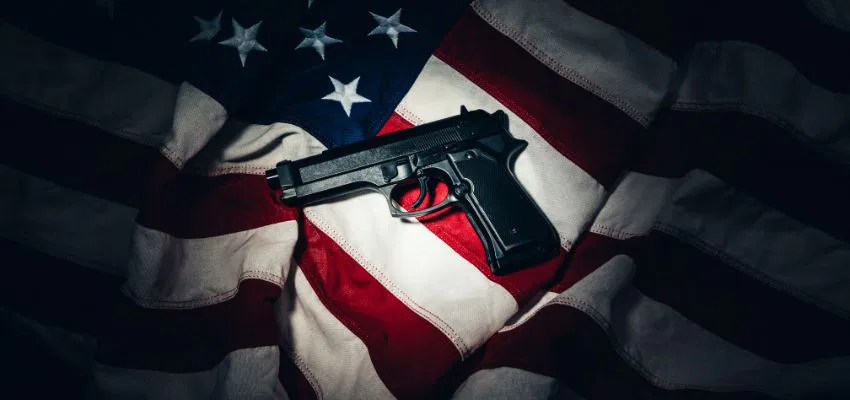What Is An Assault Weapon: A Closer Look

Published July 2, 2024
Assault weapons are a focal point in the U.S. gun debate. They often feature in mass shootings and can cause immense destruction. How much longer can we ignore their catastrophic risks?
In this article, we’ll explore what assault weapons are. Let’s examine the effects of high-capacity magazines and federal legislation’s history and current state. We’ll also discuss why some states have chosen to act independently.
What Is An Assault Weapon?
An assault weapon is a semi-automatic firearm designed for rapid, efficient lethality. Initially, it was intended for military use. These firearms are extremely deadly due to their high rate of fire and significant muzzle velocity. For example, during the Sandy Hook shooting, the perpetrator fired 154 bullets in under four minutes. This resulted in 26 fatalities.
What is considered an assault rifle? The AR-15-style rifle is the most prevalent type of assault weapon. It’s renowned for its customization options, including interchangeable grips, magazines, and sights.
In the United States, nearly half of all rifles manufactured or imported are classified as assault weapons. In 2020 alone, 2.8 million assault rifles were produced or imported into the country. The gun industry frequently rebrands these firearms as “modern sports rifles” (MSRs) to distance them from their military roots.

What Are High-Capacity Magazines?
High-capacity magazines are ammo storage devices holding more rounds than standard ones, often over 10. AR-15 magazines, for example, usually hold 30 rounds. These magazines let shooters fire many shots without reloading. This can result in higher casualties during mass shootings.
Some states define high-capacity magazines as holding more than 15 rounds. High-capacity magazines are especially dangerous in active shooter situations. They allow more rounds to be fired without reloading. This reduces opportunities to intervene and stop a shooter.
Federal Ban On Assault Weapons
In 1994, the Violent Crime Control and Law Enforcement Act instituted a federal ban on assault weapons, which remained in effect for a decade. During this time, mass shootings declined by 37%, and fatalities in such incidents fell by 43%. However, the ban included a sunset provision and expired in 2004, resulting in a resurgence in the availability and use of these weapons.
Why Some States Acted While The Federal Government Stayed Passive
After the federal ban expired, several states took action. Some legislated restrictions on assault weapons. Others implemented outright bans. By 2023, ten states and the District of Columbia had enacted such measures. These states include California, Hawaii. Connecticut, Delaware, Illinois, Maryland, New Jersey, Massachusetts, New York, and Washington.
Persistent advocacy by law enforcement prompted state-level action. Public safety organizations also played a key role. There’s also a perceived necessity to tackle gun violence locally due to the lack of federal intervention.
Proposal Of Federal Legislation
The Assault Weapons Ban of 2023 was introduced in both the House (H.R. 698) and the Senate (S. 25) in 2023. This bill aims to criminalize the importation of semi-automatic assault weapons and target selling, manufacturing, transferring, or possessing them. Large-capacity magazines are also included.
It includes provisions for grandfathered weapons. Secure storage and background checks are mandated for their sale or transfer. Additionally, the bill proposes federal grants to support buy-back programs for banned weapons.

The Path Forward: Addressing Assault Weapons And Public Safety
The debate over assault weapons remains a critical issue in the United States, with ongoing efforts to introduce regulations at both state and federal levels. Understanding what is classified as an assault weapon and its legislative history is essential for informed public discourse and effective policy-making. In the absence of federal legislation, individual states are stepping up, ensuring that the conversation around assault weapons and public safety persists. Join the dialogue and advocate for responsible policies to safeguard our communities.
Advertisement
Save 90% Per Minute On Jail Calls With Us
US prisons charge lots of money per minute for long distance inmate calls. The loved ones of inmates are left to pay this bill. For a ten minute phone call you may find yourself paying over one hundred dollars. With SecurTel, you can reduce this charge to a fraction of the cost and only pay the local calling rate. Make calls from across the US or internationally for the local rate and help your family stay connected during a difficult time. Learn more about how to sign up for inmate calls here.

This Content Is Fact Checked
We have conducted thorough fact-checking on this content in-house. Get detailed insights into our website’s editorial standards by clicking here.

About The Author
Hello! I’m Corinne, a nursing graduate from Riverside College with a flair for writing. Thanks to the thorough research into each piece, my work stands out for its quality and accuracy. I believe in the power of storytelling to connect with people from all walks of life.



